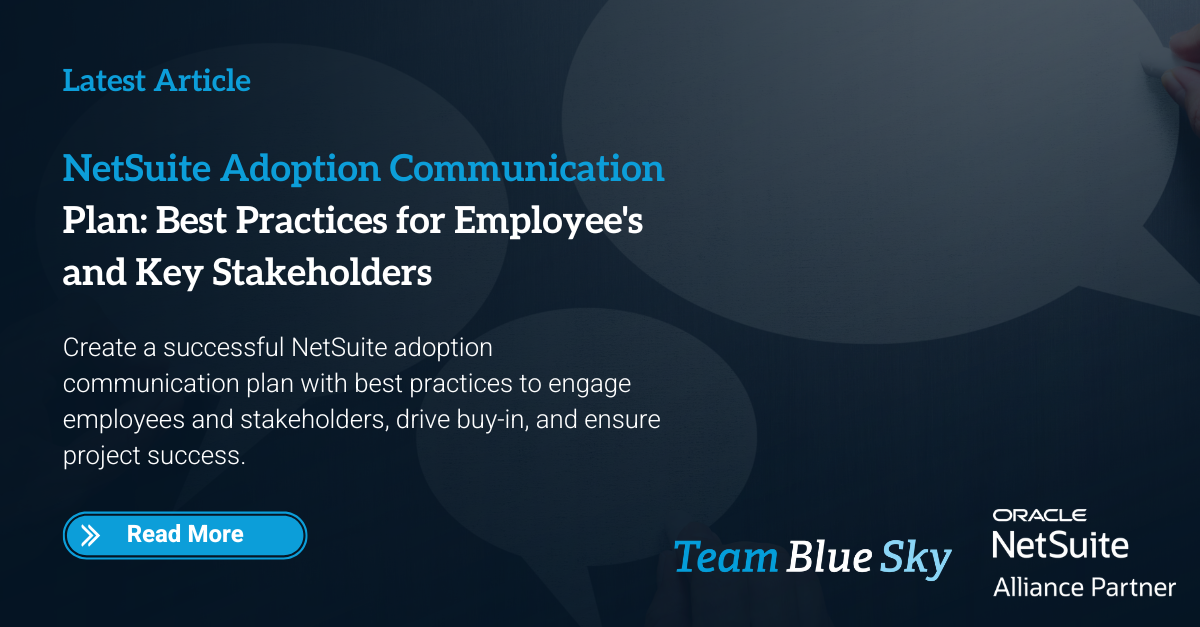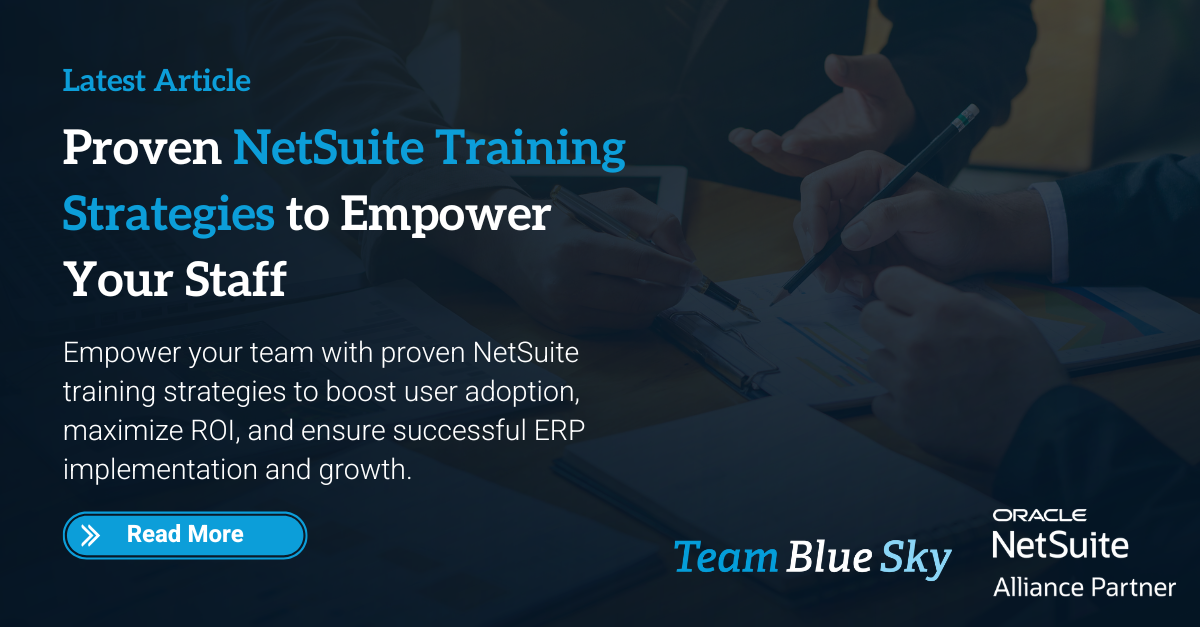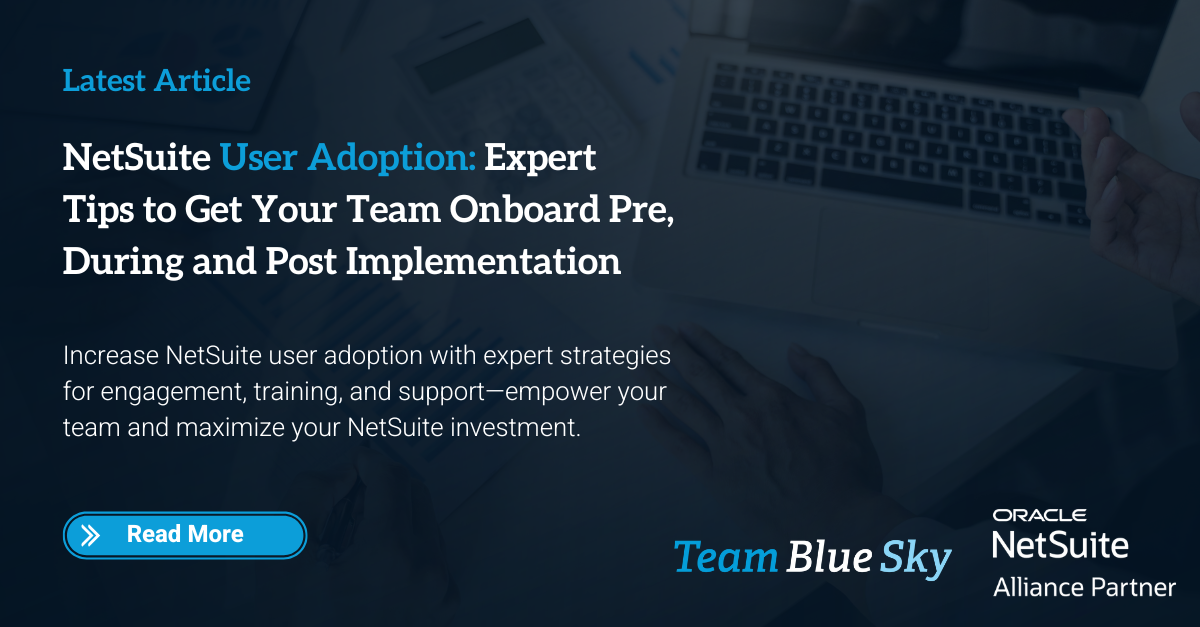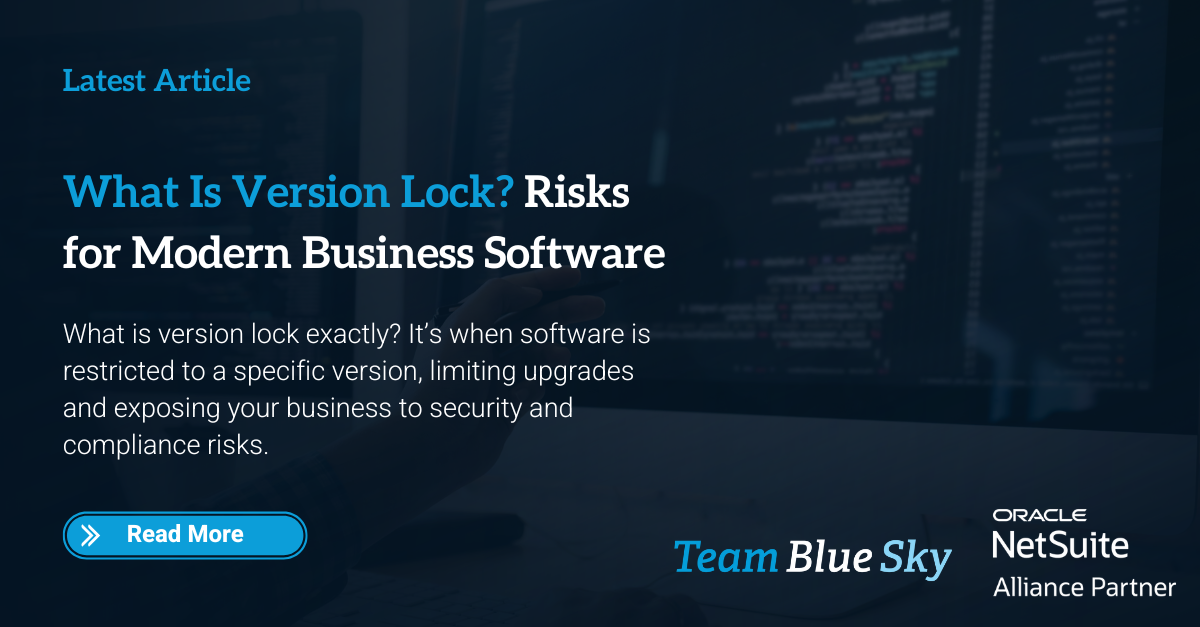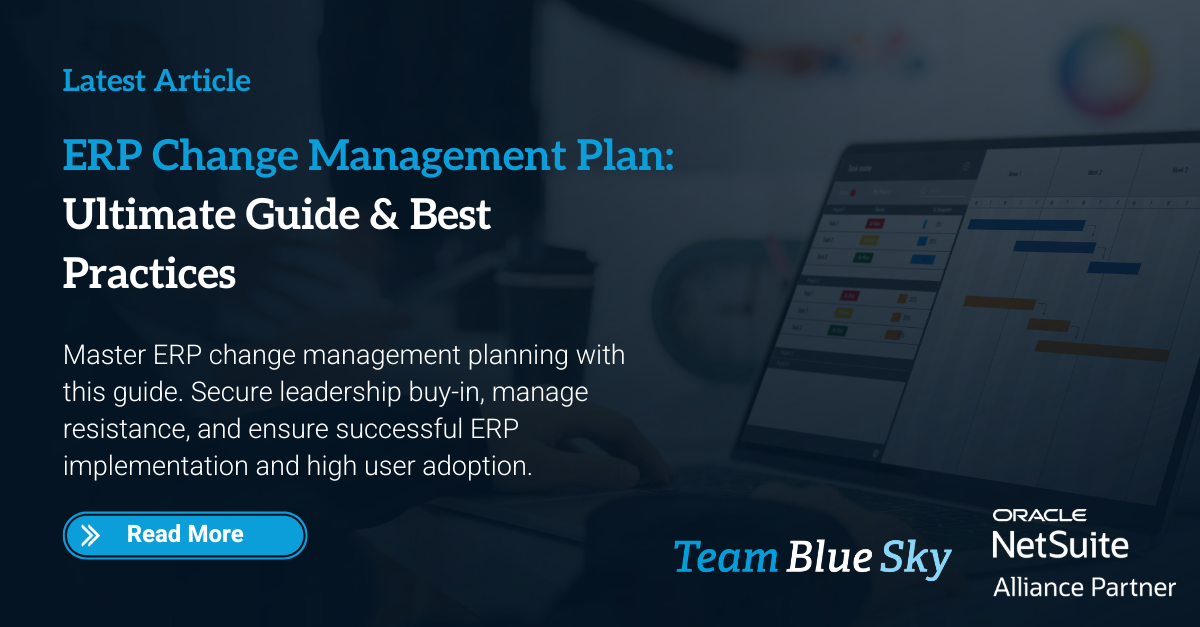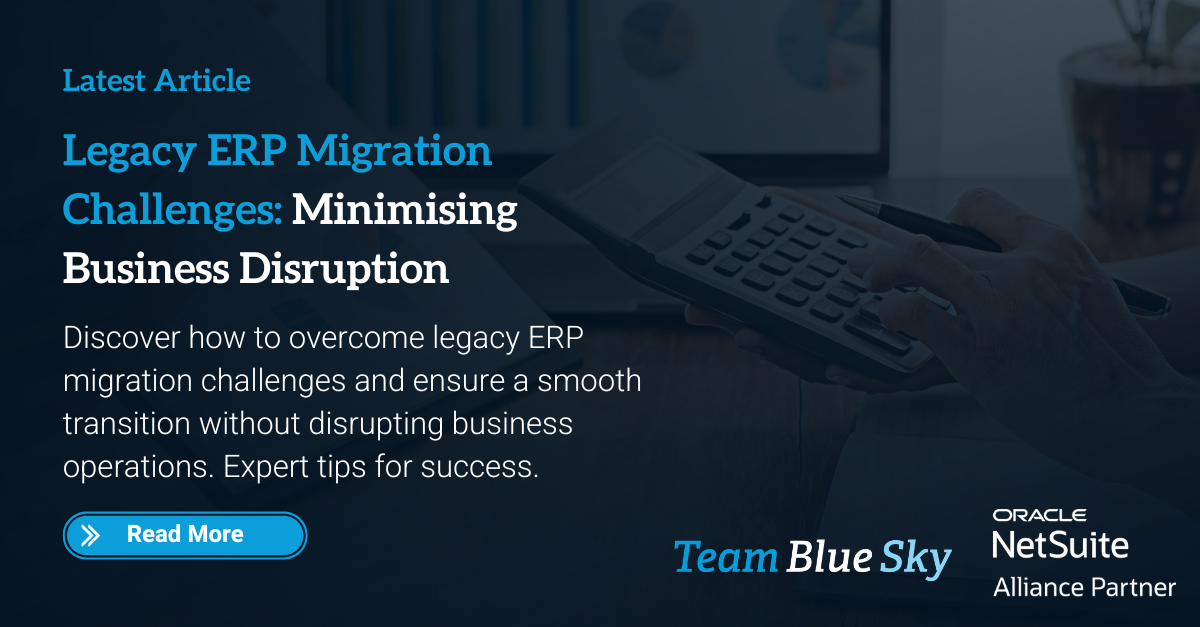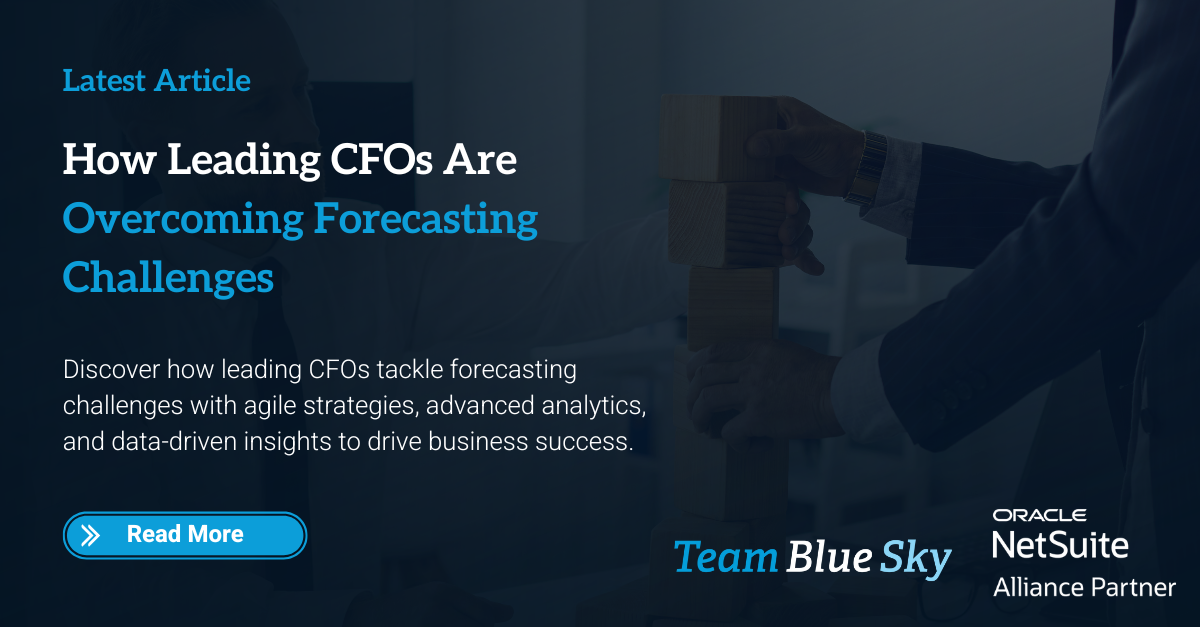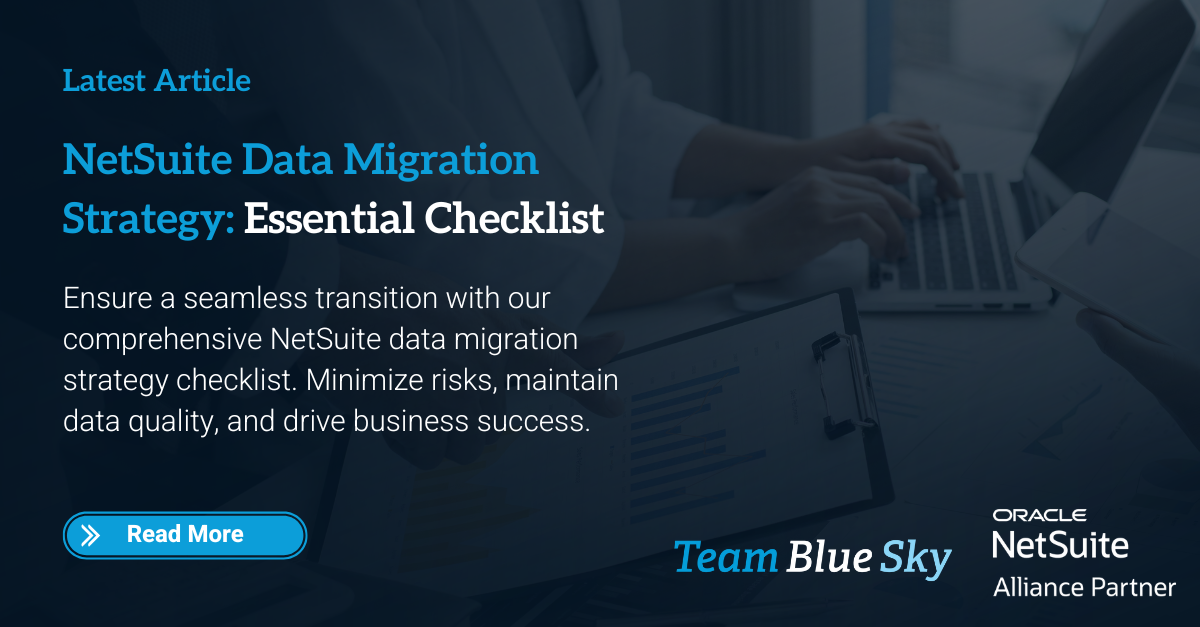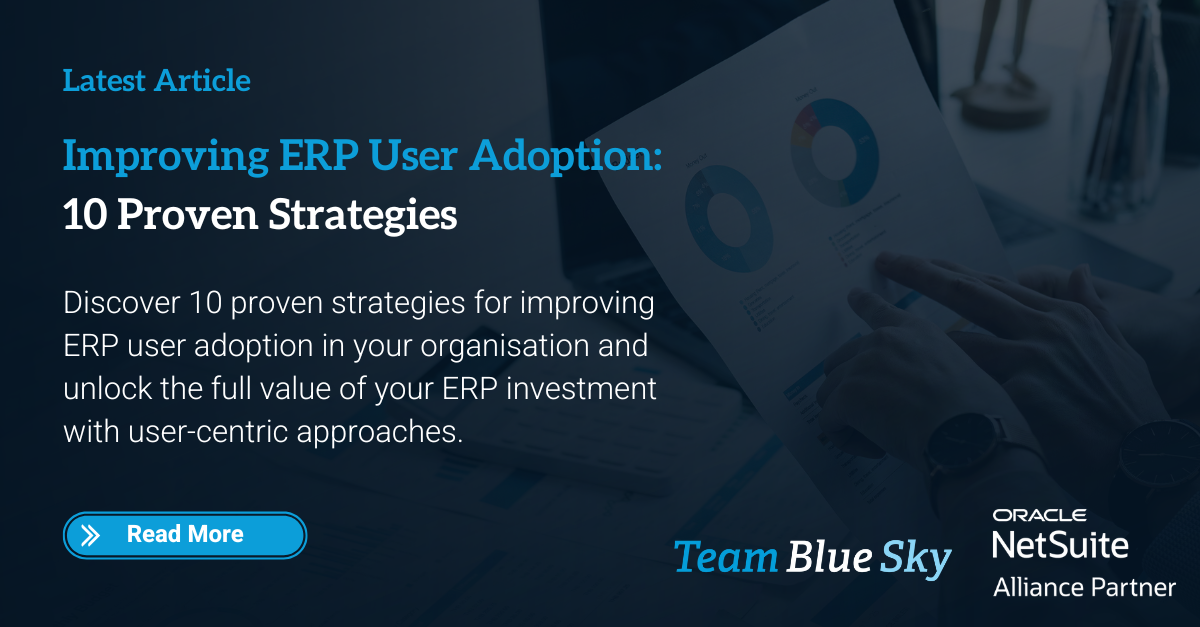NetSuite Training Needs Assessment: Tailoring Training for Maximum Impact
Executive Summary
The success or failure of a NetSuite implementation is often determined long before the system's go-live date. The pivotal factor is not the technology itself, but the organisation's strategic approach to user enablement. This process must begin with a rigorous, multi-layered Training Needs Assessment (TNA). Many organisations, however, relegate training to a final, perfunctory step in what they perceive as a purely technical project. This common misstep is a primary driver of failure, leading to low user adoption, severe data integrity issues, and an inability to realise the promised return on investment (ROI). Research indicates that up to 70% of enterprise resource planning (ERP) projects fail to achieve their stated goals, with inadequate training and poor user adoption consistently cited as principal causes.
This report presents the TNA not as a tactical, training-specific task but as a foundational strategic activity that should precede most other implementation steps. It provides an actionable framework for conducting a comprehensive TNA that aligns the NetSuite platform with core business objectives, de-risks the implementation project, and establishes a clear methodology for designing a tailored training program. A properly executed TNA drives user proficiency and is the single most effective mechanism for maximising the return on a significant technology investment.
The analysis within this report underscores the high cost of negligence, citing case studies where inadequate training led to financial turmoil, operational collapse, and lasting reputational damage. To counter these risks, a detailed, three-tiered TNA framework is presented, guiding organisations through Organisational, Role-specific, and Individual levels of analysis. The findings from this assessment directly inform the creation of a blended learning program, which combines various delivery methods to maximise engagement and knowledge retention. Finally, the report provides a robust set of metrics and a clear framework for measuring the effectiveness of the training program and calculating its ultimate ROI, providing the data-driven justification required by executive leadership.
The Strategic Foundation: Why the TNA is Your First, Most Critical Implementation Step
A common and costly mistake in ERP projects is to view the Training Needs Assessment (TNA) as a late-stage, tactical function of the Human Resources or Learning & Development department. A more strategic and successful approach reframes the TNA as a foundational business imperative—the first tangible step of any NetSuite project. It serves as a critical diagnostic tool that ensures the project is grounded in business reality, aligned with executive goals, and scoped correctly from the outset.
Beyond Technology: The TNA as a Business Readiness Assessment
A NetSuite implementation is not merely a software upgrade. It is a fundamental business transformation that re-engineers core processes and alters daily workflows across the organisation. Consequently, the first step should not be a technology evaluation but a business readiness assessment. The TNA is the formal mechanism for this assessment, compelling an organisation to measure its capacity to support the new system financially, technologically, and, most critically, culturally.
This process forces leadership to confront three essential pre-project questions:
- What are our current operational issues, and can a platform like NetSuite realistically address them?
- Is a full-scale ERP system the right solution for us now?
- Are we, as an organisation, culturally and operationally prepared to embrace the profound changes the system will bring?
The TNA provides a structured way to examine current business processes, identify areas for improvement, and document the challenges that the ERP is expected to solve. In some cases, the findings from this initial assessment may reveal that the organisation is not yet ready for such a significant leap. This conclusion, while potentially disappointing, is invaluable. By halting a project before significant resources are committed, the TNA can serve as the last step in the process, saving the organisation from the considerable costs and pitfalls of a poorly timed or ill-conceived implementation.
Aligning Implementation with C-Suite Objectives
For an ERP implementation to succeed, it must be inextricably linked to measurable, strategic business goals, not just IT objectives. The TNA is the primary tool for forging this connection. It forces the project team and stakeholders to move beyond vague aspirations and define concrete, quantifiable success metrics. For example, instead of a goal to "implement NetSuite," the TNA process helps establish a strategic objective such as, "Reduce operational costs by 15% in the first quarter post-implementation by automating the procure-to-pay process".
This level of clarity is vital for securing executive buy-in and sustained stakeholder support. When the project's purpose is articulated in the language of business outcomes—increased efficiency, improved data visibility, cost savings, or enhanced customer service—it becomes a strategic investment rather than a technology expense. This alignment empowers project leadership, provides a clear rationale for the significant change ahead, and helps minimise user resistance by answering the crucial "why" behind the implementation from day one. Without this top-down support, projects often suffer from a lack of direction and are more susceptible to being derailed by departmental politics or employee apprehension.
Informing Vendor Selection and Scope Definition
Conducting a thorough TNA before engaging in detailed vendor evaluations fundamentally improves the selection process. The assessment provides a rich, detailed understanding of the organisation's specific needs, requirements, and challenges, which serves as a robust foundation for comparing and evaluating potential ERP solutions. It allows the organisation to identify the precise NetSuite modules and functionalities required to support its desired future-state processes, both for immediate needs and future growth.
This detailed understanding enables the evaluation team to ask sharper, more insightful questions of NetSuite and its implementation partners. Instead of generic feature inquiries, the questions become highly specific:
"How does your ERP system specifically address our documented challenge of real-time inventory tracking across three warehouses?"
"What specific training resources, support structures, and change management methodologies do you provide to ensure our team can master the customised workflows we have designed?"
"Can you demonstrate how your CRM module will integrate with our existing marketing automation platform to achieve our goal of a unified customer view?"
This approach ensures the chosen solution is tailored to the business, rather than a generic one that may not meet specific requirements. Furthermore, by defining needs upfront, the TNA helps prevent the purchase of unnecessary features and mitigates the risk of "scope creep"—the uncontrolled addition of features and customisations later in the project, which is a notorious cause of budget overruns and delays. The TNA thus acts as a powerful de-risking tool, shifting the entire project's focus from a technology-centric purchase to a strategic initiative in business process re-engineering.
The High Cost of Negligence: Quantifying the Risks of Inadequate Training
When training is treated as an afterthought or its budget is curtailed to meet deadlines, the consequences extend far beyond simple user frustration. The failure to invest in comprehensive user enablement creates a "competency debt"—a gap between the skills users possess and the skills they require to operate the new system effectively. This debt accrues compounding "interest" in the form of operational friction, data corruption, and escalating remediation costs, often making the total cost of ownership (TCO) vastly exceed the initial project budget. The risks are not theoretical; they manifest as direct financial losses, operational paralysis, and severe reputational damage.
Direct Financial Consequences: Beyond Budget Overruns
A failed ERP implementation, frequently rooted in poor user training, can inflict serious and immediate financial turmoil upon an organisation. The costs are not confined to the implementation budget itself; they spill over into lost revenue and diminished profitability as the business struggles to perform its core functions.
Operational Collapse: When Business Processes Grind to a Halt
The effectiveness of an ERP system like NetSuite is directly proportional to how well its end-users know how to use the software to automate and execute their daily tasks. When training is insufficient, users are prone to making errors, particularly in data entry. In a tightly integrated system where data flows from one module to another, these seemingly small mistakes can cascade, triggering a systemic collapse of essential business processes.
One documented case saw a company's entire supply chain collapse due to thousands of incorrect manual entries made by inexperienced employees who had not received proper training on the new ERP system. This is not an isolated phenomenon.
Case Study: National Grid
The utility company's ERP failure, attributed to insufficient project planning and inadequate testing and training, touched nearly every facet of its operations. The system malfunction led to a cascade of process failures:
Payroll: Employees were underpaid or overpaid.
Procurement: Vendor invoices went unprocessed, straining supplier relationships.
Inventory Management: The company lost track of its inventory, forcing it to rely on expensive contractors to fix the problems, which directly impacted profit margins.
Financials: The ability to conduct financial reporting was severely compromised.
This illustrates the cross-departmental chaos that ensues when users are unable to perform their fundamental roles within the new system. The immediate result is a drastic reduction in productivity, as employees are forced to invent time-consuming manual workarounds or spend hours simply trying to figure out how the system works.
The Ripple Effect: From Internal Chaos to External Damage
The internal operational failures caused by poor user adoption inevitably breach the company's walls, inflicting damage on its external relationships, brand reputation, and legal standing.
Bad Customer Experience
A failing ERP project directly impacts customers. They may be charged the wrong amount for a product, experience shipping delays because of inventory mismanagement, or find customer support centers unreachable due to system failures. This poor experience erodes trust and can lead to a permanent loss of market share as frustrated customers turn to competitors.
Regulatory and Legal Fallout
The consequences can escalate to legal and compliance crises. Improperly configured systems or user errors can lead to the exposure of sensitive customer or health data, triggering regulatory scrutiny and fines under mandates like GDPR or HIPAA. The fallout from a failed project can also devolve into costly litigation. Companies have sued their ERP vendors and implementation partners, and have, in turn, been sued by them. Furthermore, investors may take legal action if the project's failings materially harm their financial position, and customers whose personal data has been breached may initiate class-action lawsuits.
Embarrassing Public Relations
Disciplinary action by a regulator or public trial often requires disclosure to shareholders and the market. The resulting negative press can severely damage a company's brand and public image. This can cause vendors to become wary of the organisation's long-term viability and customers to become unwilling to purchase its products or services.
Ultimately, the initial "savings" from cutting the training budget are a dangerous illusion. The true cost is paid post-go-live through increased support costs, lost productivity, data remediation efforts, and the opportunity cost of unrealised benefits. This reframes the TNA and the subsequent training program not as a project expense, but as the most effective form of TCO insurance an organisation can procure.
The TNA Framework: A Multi-Level Approach to Identifying Skill Gaps
To be effective, a NetSuite Training Needs Assessment cannot be a simple checklist or a single survey. It must be a systematic, multi-level investigation that connects high-level business strategy to the specific, on-the-ground skill requirements of individual employees. This three-tiered framework, encompassing Organisational, Role/Task, and Individual analyses, provides a structured and repeatable methodology for uncovering the critical skill gaps that the training program must address. A critical point often missed is that the most detailed levels of this analysis must be conducted against the customised NetSuite environment, not a generic, out-of-the-box version. This requires careful timing, often aligning the TNA with the User Acceptance Testing (UAT) phase of the implementation, ensuring that training is developed for the system as it will actually be used.
Level 1: Organisational Analysis - Defining the "Why"
The Organisational Analysis sets the strategic context for the entire training effort. Its objective is to ensure that the training program is not an isolated activity but a direct enabler of the business goals that justified the NetSuite investment in the first place. This phase begins by establishing clear objectives for the TNA itself, explicitly linking it to high-level strategic drivers such as improving operational efficiency, supporting market expansion, or enhancing customer service. This requires deep engagement with senior leadership and project sponsors to understand their vision for the project and to secure the top-down support and resources necessary for a comprehensive training initiative. This level of analysis also involves a realistic assessment of the organisation's capabilities, including budgetary constraints, available internal resources, and the existing IT infrastructure, and a candid evaluation of the organisation's cultural readiness for a change of this magnitude.
Level 2: Role & Task Analysis - Defining the "What"
This is the most granular and critical level of analysis, where strategic goals are translated into specific, on-the-job competencies. The objective is to deconstruct business processes and job functions to determine precisely what employees will need to do differently within the new NetSuite environment. The core activity here is a detailed Job Task Analysis, which breaks down each relevant role—from an Accounts Payable Clerk to a Sales Director to a Warehouse Manager—into its constituent tasks and responsibilities.
This analysis is powered by process mapping, where teams document their current "as-is" workflows and then, in collaboration with implementation consultants, design the desired "to-be" processes that will run on NetSuite. This comparative mapping exercise is what reveals the specific changes in roles, responsibilities, and daily activities. Based on this, a Competency Framework is developed for each role, creating a detailed blueprint of the skills (e.g., navigating the procurement module), knowledge (e.g., understanding the three-way match concept), and behaviors (e.g., running a weekly inventory report) required for success in the new system.
Level 3: Individual Analysis - Defining the "Who" and "How"
With the required competencies defined, the final step is to measure the current state of the workforce to identify the gap. The Individual Analysis assesses the existing skill levels, learning preferences, and potential attitudes of the end-users who will ultimately determine the project's success. A skills gap assessment is conducted using a variety of tools—from online surveys and practical skills tests to manage feedback and analysis of past performance data—to measure the proficiency of each employee against the competency frameworks developed in Level 2.
This analysis goes beyond technical skills to understand the learner profiles. Data is collected on users' prior experience with ERP systems, their general comfort level with technology, and their preferred learning styles (e.g., visual, hands-on, self-directed). This information is crucial for designing a training program that is not only relevant in content but also engaging in its delivery. This phase also serves as an early warning system, helping to proactively identify individuals who are enthusiastic and technologically adept, positioning them as potential "super users" or change champions, and those who are more hesitant or deeply attached to legacy processes, who may require additional support and change management attention.
From Analysis to Action: Designing the Optimal NetSuite Training Program
The data and insights gathered from the multi-level Training Needs Assessment form the blueprint for constructing a targeted, effective, and efficient training program. The goal is to move beyond a generic, one-size-fits-all approach and develop a tailored learning journey that addresses the specific skill gaps, role requirements, and learning preferences identified in the TNA. The most successful programs are not single "events" but rather continuous learning "ecosystems" that blend formal instruction with informal, on-demand performance support.
The Blended Learning Imperative: A Multi-Modal Approach
No single training methodology can effectively cater to the diverse needs of an entire organisation. A blended learning strategy, which combines various instructional formats, is essential for maximising engagement, accommodating different learning styles, and reinforcing knowledge over time. This approach strategically integrates the high-touch interaction of instructor-led training with the flexibility and scalability of online modules and the real-world applicability of on-the-job coaching. By offering a mix of delivery methods, organisations can create a more dynamic and comprehensive learning experience that improves knowledge retention and accommodates the demanding schedules of a modern workforce.
Deep Dive into Delivery Methods
Choosing the right mix of training methods is a critical decision that should be driven directly by the TNA findings. A finance team learning a complex new revenue recognition process has different needs than a sales team needing a quick refresher on entering a lead. The following table provides a comparative analysis to guide this selection process.
Comparative Analysis of NetSuite Training Delivery Methods
| Method | Best For | Scalability | Cost-Effectiveness | Engagement Level | Knowledge Retention | Pros | Cons |
|---|---|---|---|---|---|---|---|
| In-Person Instructor-Led Training (ILT) | Complex, collaborative processes; initial project kick-off; building team cohesion. | Low | Low | High | High | - Direct face-to-face interaction - Immediate, personalised feedback - Hands-on, collaborative workshops | - High cost (travel, venue) - Difficult to schedule - Not scalable for large/dispersed teams |
| Virtual Instructor-Led Training (VILT) | Dispersed teams; delivering instructor-led content at scale. | High | Medium | Medium-High | Medium-High | - Cost-effective vs. ILT (no travel) - Scalable to global audiences - Live interaction and Q&A | - Requires skilled virtual facilitators - Risk of remote distractions - "Zoom fatigue"; less non-verbal communication |
| Self-Paced eLearning | Foundational knowledge; standardised processes; pre-work for ILT/VILT sessions. | High | High | Low-Medium | Low-Medium | - Flexible, learn anytime/anywhere - Consistent message delivery - Users learn at their own pace | - Low engagement if not interactive - High risk of content becoming outdated - Can feel isolating; high incompletion rates |
| Microlearning | Performance support; just-in-time refreshers; reinforcing specific tasks; update training. | High | High | Medium | High (if contextual) | - Short, focused, easily digestible - Accessible at the moment of need - Easy to update for system changes | - Not for complex topics - Can be out of context if delivered via a separate LMS - Risk of fragmentation if not part of a larger strategy |
| On-the-Job Coaching & Mentorship | Real-world application; reinforcing formal training; personalised support. | Low | Medium | High | High | - Highly contextual and relevant - Immediate problem-solving - Leverages internal "super users" | - Resource-intensive - Consistency can vary - Can disrupt the mentor's own work |
| Simulations | Hands-on practice in a risk-free environment; mastering complex transactions; UAT. | Medium | Medium | High | Very High | - Realistic, "learning by doing" - Builds confidence; reduces errors in the live system - Can be based on the customised system | - Can be time-consuming to develop - Requires a stable, configured sandbox environment - May require specialised authoring tools |
The most effective training plans leverage these methods in combination. For instance, a program might start with self-paced eLearning modules to cover basic navigation and concepts, followed by a VILT session to walk through key processes collaboratively, and then provide a library of microlearning videos and job aids for ongoing performance support. The gold standard involves extensive use of simulations in a sandbox environment that mirrors the company's actual customised NetSuite instance, allowing users to practice their specific tasks in a safe, "as-it-would-be" setting.
The Power of Role-Based Training
The most important principle in designing the training curriculum is to make it role-based. A one-size-fits-all training program that attempts to teach every user every feature is a guaranteed recipe for failure, leading to information overload and disengagement. The Role & Task Analysis from the TNA provides the exact blueprint needed to create tailored learning paths that focus only on the modules, processes, and reports relevant to a specific job function.
Example Role-Based Curriculums:
For the Finance User (AP/AR Clerk)
The learning path would concentrate on the Financials and Accounting modules. Training would cover creating vendor bills, processing payments, generating customer invoices, applying cash receipts, and running essential reports like Aged Payables and Aged Receivables. The goal is mastery of the procure-to-pay and order-to-cash cycles within NetSuite.
For the Warehouse Manager
The curriculum would focus on Inventory Management and Order Fulfillment. Training would include topics like receiving purchase orders, performing bin transfers, managing inventory counts, picking and packing sales orders, and using NetSuite's demand planning and reporting tools. If third-party tools like RF-SMART are used for barcode scanning, that training would be a core component.
For the Sales Representative
Training would be centered on the NetSuite CRM functionality. The learning path would cover creating and managing leads, opportunities, and contacts; generating quotes and sales orders; and using dashboards and reports to track sales pipelines and performance against quota.
For the Executive (CFO/CEO)
Training for this group should be minimal and highly strategic. It should not cover transactional details. Instead, it should focus exclusively on how to access and interpret high-level, real-time dashboards, key performance indicators (KPIs), and consolidated financial reports to support strategic decision-making.
By tailoring the content in this way, each user receives training that is directly applicable to their daily responsibilities, which dramatically increases relevance, engagement, and the likelihood of successful adoption.
Mastering the Human Element: Change Management and Overcoming Resistance
The most perfectly configured NetSuite system will fail if the people who must use it do not embrace it. The primary obstacles to ERP success are often not technological but human-centric, with employee resistance to change being a more significant hurdle than any software bug or integration challenge. Therefore, a proactive and empathetic change management strategy is not an optional add-on to the implementation plan; it is a core competency required for success. This involves understanding the root causes of resistance and deploying a multi-pronged strategy to build buy-in, communicate effectively, and empower users through the transition.
Deconstructing Resistance: It's Not Sabotage, It's Human Nature
It is a critical error to label employees who are hesitant about a new system as "resistors" or "saboteurs." This perspective is counterproductive and fails to recognise that resistance is a natural human response to disruption and uncertainty. To overcome it, one must first understand its sources.
Common Root Causes of Resistance:
Fear and Uncertainty
The introduction of a powerful automation platform like NetSuite naturally stokes fear. Employees may worry about their job security, fearing automation will render their role obsolete. They may also feel anxious about their ability to learn and master a complex new technology, fearing they will look incompetent.
Loss of Habit and Comfort
Even if legacy systems are slow and cumbersome, employees are accustomed to them. They have developed routines and workarounds and are comfortable in their established processes. The new system forces them out of this comfort zone, creating a sense of loss for the familiar.
Lack of Perceived Benefit
If the organisation fails to clearly articulate the "What's In It For Me?" (WIIFM) for each user group, employees will view the new system as an impediment imposed upon them, rather than a tool to make their jobs easier. Without a clear personal or team benefit, there is no motivation to endure the pain of learning something new.
Insufficient Leadership Support
Change must be championed from the top. If executive and departmental leadership do not actively and visibly support the new system, employees will interpret this as a sign that the change is not a priority and will be less motivated to adopt it.
A Proactive Change Management Strategy
Effective change management is not a reactive damage control exercise deployed after resistance emerges. It is a proactive, strategic communication and engagement plan that begins on day one of the project and continues long after go-live.
Key Pillars of a Proactive Strategy:
Secure Executive Sponsorship
Visible, unwavering, and vocal support from the executive team is non-negotiable. An executive sponsor must be appointed to champion the project, articulate the strategic vision, communicate its importance, and empower the project team to manage the implementation effectively. Their role is to ensure system use is not optional.
Communicate Early and Often
A comprehensive communication plan is essential. Organisations must clearly articulate the reasons for the change, the expected benefits for the company and for individual employees, and the project timeline. This communication should be continuous and utilise multiple channels, such as town hall meetings, newsletters, dedicated project websites, and FAQ documents, to build excitement and proactively address concerns.
Involve Users from the Beginning
The best way to foster a sense of ownership is to involve end-users in the process. Select key users from various departments to participate in requirements gathering, process design workshops, and, most importantly, User Acceptance Testing (UAT). When users have a hand in shaping and testing the system, they are far more likely to become advocates for it.
Leverage Training as a Change Tool
Comprehensive, role-based training is perhaps the most powerful tool for overcoming resistance. It directly addresses the fear of the unknown by building competence and confidence. When employees feel they have been given the tools and support to succeed, their anxiety decreases and their willingness to adopt the new system increases significantly.
Empowering Internal Champions ("Super Users")
Within any organisation, there are employees who are naturally more enthusiastic, technologically adept, and eager to embrace change. Identifying these individuals early in the process and formally empowering them as "super users" or "change champions" is a highly effective strategy for driving adoption from the ground up. These champions become an invaluable, trusted extension of the official training and support team.
The Role and Impact of a Super User:
Peer-to-Peer Support
Super users can provide "elbow-to-elbow" support to colleagues who are struggling, offering guidance in a less intimidating, more relatable way than a formal help desk ticket might.
Internal Mentorship
They act as informal mentors and trainers, sharing best practices, tips, and shortcuts within their departments.
Positive Advocacy
Genuine enthusiasm is contagious. They can share success stories and demonstrate the tangible benefits of the new system, helping to shift the narrative from one of disruption to one of opportunity.
Feedback Channel
Super users are on the front lines and can provide the project team with invaluable, real-world feedback on what is working and what is not, allowing for rapid adjustments to training or system configuration.
By strategically developing this internal network of champions, an organisation can significantly accelerate user adoption and create a self-sustaining culture of support and continuous improvement.
Measuring What Matters: Proving the ROI of Your NetSuite Training Investment
For executive leadership and project sponsors, the ultimate measure of a training program's success is its contribution to the bottom line. Therefore, the final and most critical phase of the training initiative is to move beyond anecdotal evidence and implement a data-driven framework for evaluating its effectiveness and calculating its financial return on investment (ROI). This process transforms training from a perceived cost center into a demonstrable value driver, justifying the investment and providing a clear link between user proficiency and business performance. The most valuable metrics are often leading indicators of business health, such as feature utilisation and data quality, which can serve as an early warning system for potential operational issues.
Establishing the Baseline: Measuring Before You Train
To accurately measure the impact of any intervention, one must first know the starting point. A common failure in evaluating training is the lack of pre-training baseline data. Before the training program begins, it is essential to gather metrics on the organisation's performance with its legacy systems or manual processes. This baseline is the benchmark against which all post-training improvements will be measured.
Essential Baseline Data to Collect:
Process Efficiency
Measure the current cycle times for key business processes that NetSuite will impact (e.g., average time to close the monthly books, average order-to-cash cycle time, time required to generate a sales forecast).
Data Quality
Quantify current data error rates. This could include the number of invoice corrections required per month, the percentage of duplicate customer records, or the frequency of inventory count discrepancies.
Support Load
Track the volume and type of IT and support help desk tickets related to the processes that will be migrated to NetSuite.
Employee Performance and Satisfaction: Use surveys to gauge current employee satisfaction with existing tools and processes, and collect any available individual or team performance metrics.
Key Performance Indicators (KPIs) for Training Effectiveness
After the go-live and completion of initial training, the organisation must systematically track a range of KPIs to assess the program's impact. These metrics should go far beyond simple course completion rates to measure actual changes in user behavior and operational performance.
Table 3: Key Performance Indicators for Measuring Training ROI
| KPI Category | Specific Metric | Definition | Measurement Method | Link to Business Value |
|---|---|---|---|---|
| Adoption & Proficiency | User Adoption Rate | Percentage of licensed users who actively log in and use the system within a given period (e.g., weekly, monthly). | System login reports; user activity logs. | Indicates overall acceptance and engagement with the new system. Low adoption signals launch failure. |
| Feature Utilisation Rate | Percentage of key NetSuite features (e.g., advanced reporting, workflow automation) that are being used by the relevant user groups. | Analysis of system usage data; surveys. | A leading indicator of ROI. If only basic features are used, the full value of the investment is not being realised. | |
| Knowledge Retention | The degree to which users retain information from formal training sessions. | Comparison of pre-training and post-training knowledge assessment scores. | Measure direct effectiveness of training content and delivery. | |
| Operational Efficiency | Process Cycle Time Reduction | The decrease in the average time it takes to complete a key business process (e.g., order fulfillment). | Compare post-training cycle times (measured in NetSuite) against the pre-training baseline. | Direct measure of productivity and efficiency gains, which translates to labor cost savings. |
| Productivity Gains | Increase in output per employee or team (e.g., number of invoices processed per AP clerk per day). | Performance reports from NetSuite versus baseline data. | Quantifies the improvement in workforce efficiency and operational capacity. | |
| Quality & Accuracy | Data Entry Error Rate Reduction | The decrease in the number of errors in data entered into the system (e.g., incorrect order details, misclassified expenses). | Track number of manual corrections, credit/rebill memos, or data validation error reports. | A leading indicator of business health. Improved data quality leads to more reliable reporting and better decision-making. |
| Decrease in Help Desk Tickets | A reduction in the volume of support tickets related to "how-to" questions and basic system functions. | Analysis of help desk ticketing system data, comparing pre- and post-training volumes. | Indicates increased user self-sufficiency and confidence, reducing the burden on IT/support teams. | |
| Employee Impact | Employee Satisfaction | The level of satisfaction users have with the new system and the training they received. | Post-training surveys, focus groups, and feedback forms. | Higher satisfaction is linked to better morale, higher productivity, and potentially lower employee turnover. |
Final Thoughts
This report emphasises that a NetSuite implementation's success hinges on a thorough, multi-layered Training Needs Assessment (TNA), which should precede other steps. It highlights that inadequate training is a major cause of ERP project failure, leading to low user adoption, data integrity issues, and missed ROI.
The report proposes a three-tiered TNA framework (Organisational, Role-specific, and Individual analysis) to align NetSuite with business objectives, de-risk the project, and inform a tailored, blended learning program. It also quantifies the risks of neglecting training, citing financial turmoil and operational collapse, and stresses the importance of change management, including securing executive sponsorship, communicating early, involving users, and leveraging internal champions.
Finally, the report outlines a data-driven approach to measuring training effectiveness and ROI, using KPIs like user adoption, feature utilisation, process cycle time reduction, and data entry error rates.
Ready to maximise your NetSuite investment and ensure a seamless transition? Don't let your implementation fall victim to common training pitfalls. Contact TeamBlueSky today to discuss your upcoming NetSuite implementation or training needs and develop a strategy that ensures success.

Henry Sack
General Manager

With over 12 years of experience as a NetSuite implementation consultant, Henry Sack leads TeamBlueSky’s team of NetSuite and accounting experts in his role of General Manager.
TeamBlueSky is a leading Australian
NetSuite Alliance Partner whose mission is to provide critical
NetSuite BPO and
Payroll services to NetSuite clients who are wanting to simplify their
back office processes and partner with a leading
NetSuite administration expert.
TeamBlueSky have also partnered with global Suite Developer Network partners to offer local solutioning, implementation and support services for global NetSuite SuiteApps.




